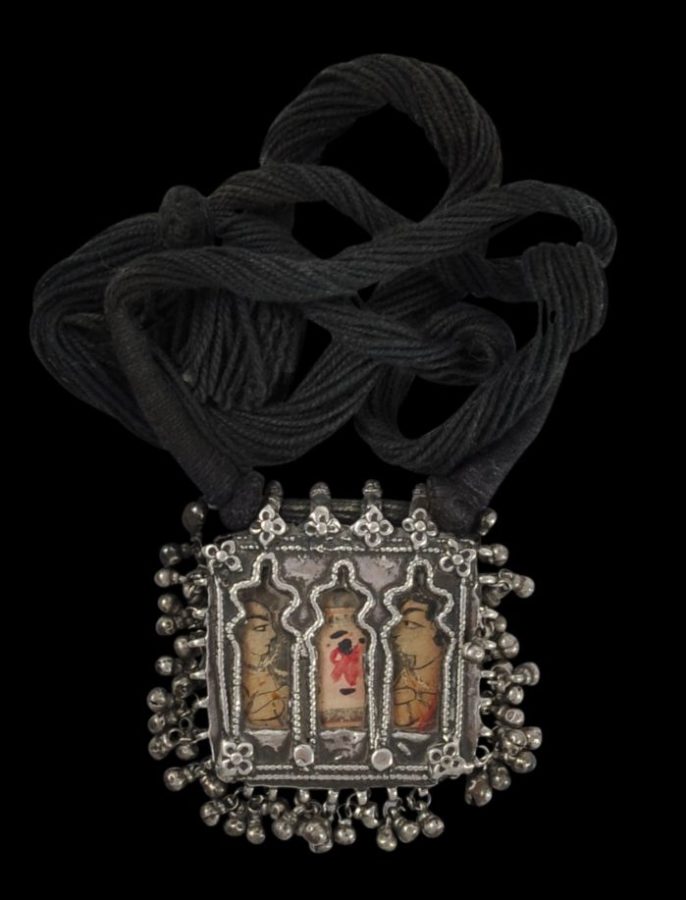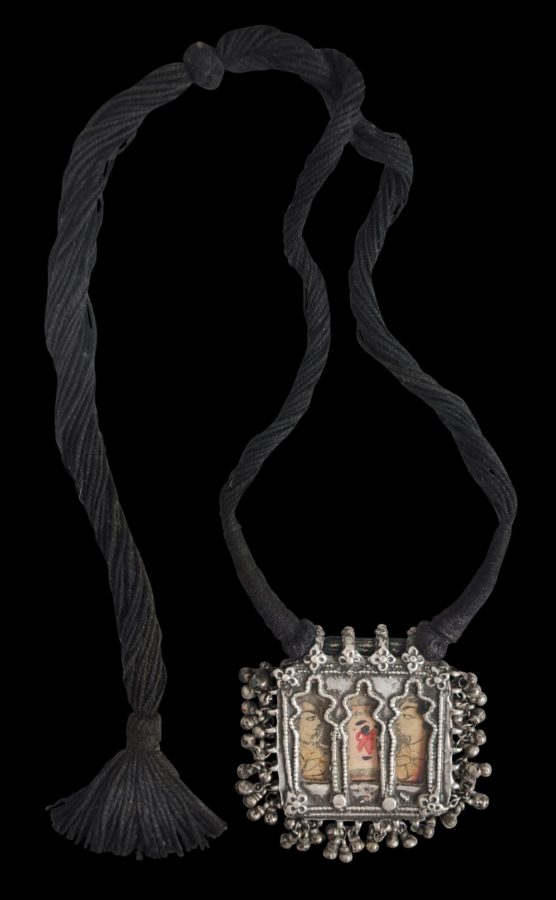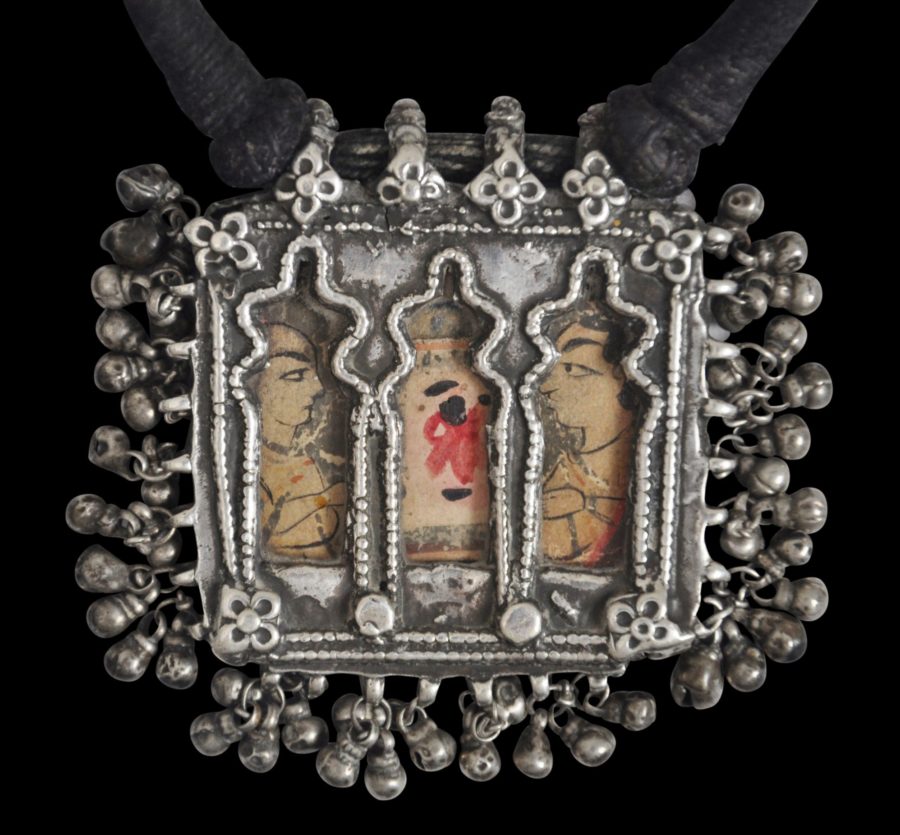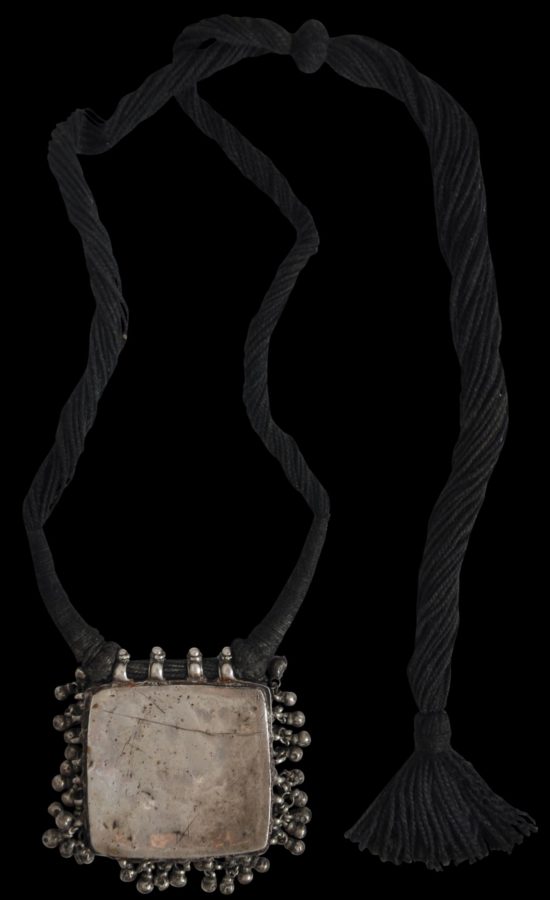Enquiry about object: 6343
Hindu Pilgrim’s Silver Shrinathji Amulet Pendant Necklace (Chhedi ka Jantar)
Rajasthan, India 19th century
dimension of amulet: 5cm x 5.5cm, weight: 51g
Provenance
UK art market
This beautiful and wearable amulet pendant of high-grade silver is suspended on what is probably an original multi-strand, black yarn necklace. It is from Rajasthan and dates to the 19th century.
It encloses a hand-painted painting of a central figure, Shrinathji, framed by the silver in Rajput-style cusped arches and columns, and beneath a thin sheet of glass. It represents Krishna at the age of seven years, holding Mount Govardhan on a finger of his left hand to shelter the people of Vraj and their cattle from the wrath of Indra.
Shrinathji is the central deity of the Pushti Marg or Vallabha sect of Krishna worship, popular in Nathdwara near Udaipur in Rajasthan.
The figures on either side of Shrinathji are Gosains or priests of the order.
The miniature here is of Shrinathji of Nathdwara close to Udaipur in Rajasthan, the central deity of the Pushti Marg or Vallabha sect of Krishna worship. It represents Krishna at the age of 7 years, holding Mount Govardhan on a finger of his left hand to shelter the people of Vraj and their cattle from the wrath of Indra. The figures on either side of Shrinathji are Gosains or priests of the order. (Joan Bowers, pers. comm.)
Four eyelets at the top allow for suspension. Multiple silver bells are suspended from the sides and the lower edge.
The reverse of the amulet is enclosed with plain sheet silver.
Such an amulet most probably was acquired from the environs of a temple in Nathdwara by a pilgrim and worn thereafter as a keepsake.
A related example is illustrated in Untracht (1997, p. 131).
Artists across Rajasthan produced miniature paintings from the 18th to the early 20th centuries, for pilgrims to temples. Many such paintings were incorporated into silver jewellery to provide adherents with a protective talisman that they could wear.
The piece has splendid patina; its contours have been worn smooth by wear, age and handling. It is very wearable.
References
Joan Bowers, (Australia), pers. comm.
Bowers, J., ‘Talisman Garlands: Painted mala from Rajastan’, in TAASA Review, Volume 30, no. 3, September 2021.
Untracht, O., Traditional Jewelry of India, Thames & Hudson, 1997.






